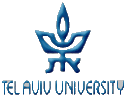In vitro exposure of nasal epithelial cells to desert dust.
Dust storms are natural events and common in dry land areas like the Negev. The Northern Negev has been developed to be one of the major agricultural areas of Israel. As a result of the dry-climate, the dust storms may also include mixtures of organic and inorganic particles and even remnant of pesticides. The health risks to human populations that live and breathe in the vicinity of agricultural land, which is often exposed to dust storms, are not known. We modified the experimental setup that generates physiological respiratory flows on the apical side on nasal epithelial cells (NEC) that were cultured under air-liquid interface (ALI) conditions to enable exposure experiments to controlled levels of air-pollution. The modified system allows experiments with either "clean air" after using vacuum suction to clean all parts of the system or "polluted air" with a known amount of desert dust. We simulated dust storms with dust samples from the Negev under realistic and controlled laboratory simulations that mimic nasal breathing. In this study we evaluate mucin secretion and inflammatory expressions (e.g., interlukine-8) as a result of exposure to the dust under physiological breathing.

